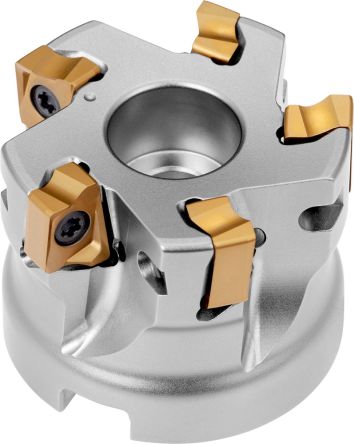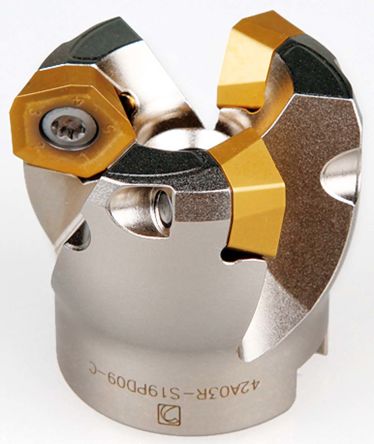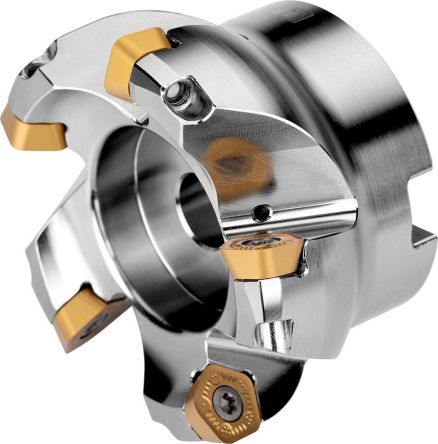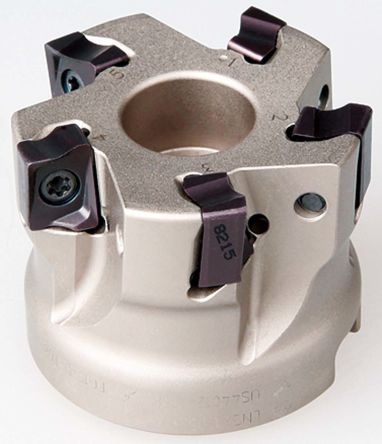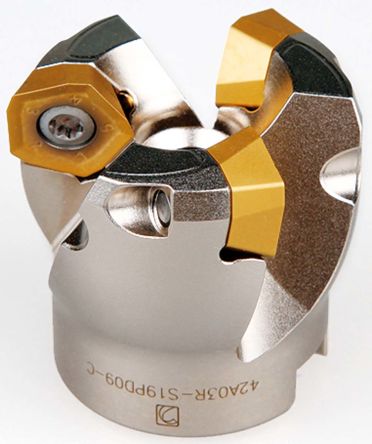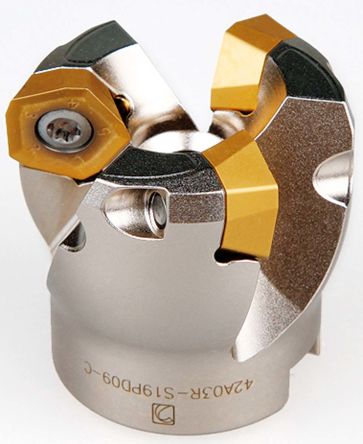- Automation & Control Gear
- Cables & Wires
- Enclosures & Server Racks
- Fuses & Circuit Breakers
- HVAC, Fans & Thermal Management
- Lighting
- Relays & Signal Conditioning
- Switches
- Batteries & Chargers
- Connectors
- Displays & Optoelectronics
- ESD Control, Cleanroom & PCB Prototyping
- Passive Components
- Power Supplies & Transformers
- Raspberry Pi, Arduino, ROCK, STEM Education & Development Tools
- Semiconductors
Face Mills
A face mill, also known as a shell mill, is a circular milling tool with a flat end and carbide or carbide-tipped inserts positioned along its sides. They are most commonly used for creating a flat face on the surface of a metal plate or bar workpiece. With multiple teeth to distribute the chip load, face mills efficiently can carry out milling tasks at faster speeds than a fly cutter. While they are not necessarily faster than end mills, they do typically have a wider diameter, allowing for more material stock to be cut away.
Which face mill should I use?
There are several factors that should be considered when choosing a face mill for your project. The material of the face mill is important for understanding the level of cutting the machine can handle. Coatings for face mills are also an important consideration, as these can not only provide additional protection against corrosion and abrasion, but also increase the tool's hardness, provide lubrication to prevent burring and, as a result, increase the overall lifespan of the tool.
The horsepower of the spindle must also be considered before face milling begins, as a cutter that has too many inserts rotating at a high speed is likely to get clogged up with material incredibly fast. The more inserts a face mill tool has, the more possibility there is for uneven wear or subtle height difference that won't translate well to your final surface finish. In order to achieve that smooth surface finish you're looking for, make sure that your milling machine is working at the optimum speed for the material it's cutting and the face mill you have chosen.
What types of face mills are available?
Face mills are constructed from solid materials with additional holders and inserts that are usually disposable. They can be used with a variety of ends or tips for different surface finishes, including:
- Ball nose tips – with a 'ball nose' tip that has a radius equal to one half of the cutter's overall diameter, making them ideal for manufacturing female semicircle grooves.
- Chamfer tip - these tip ends feature an angled section to produce a chamfered edge on a workpiece.
- Square end - for face mills that have a square or straight end, these tips have no radius, chamfer or any other feature.
- Radius-tip - these face mill ends consist of straight flutes with a ground radius on the tip.
